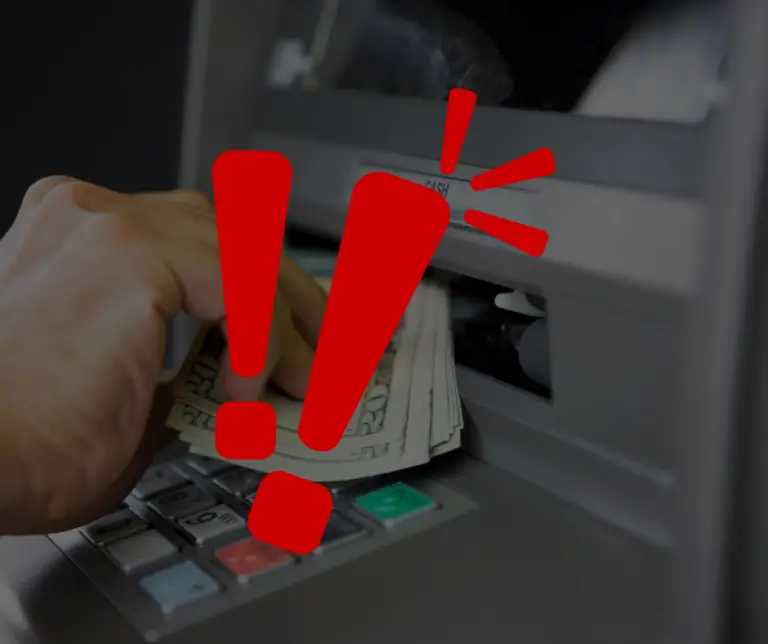How Banks and Credit Unions Can Minimize the Risk of Jackpotting Attacks
Though banks and credit unions have always committed to ATM security, the threat of jackpotting is bringing the goal of protecting ATMs into renewed focus. ATM jackpotting is the use of physical or software vulnerabilities to force an ATM to dispense cash. These attacks on the machines can put financial institutions at risk of significant losses. The number of jackpotting attempts is rising annually, but by adopting sound strategies, banks and credit unions can reduce the likelihood of a successful attack.
Read on for some proactive steps to guard against jackpotting.

Strengthen Physical Security Measures
While jackpotting attacks involve unauthorized use of the ATM’s software, the physical security of a machine is a critical part of protecting it from tampering. If financial institutions are lax in controlling physical access to an ATM, they risk leaving an entry point for attackers to install malware necessary for jackpotting. How can you shore up physical ATM security?
- Ensure that external ATMs are fully alarmed and have unique keys.
- Employ methods to disable the use of external storage devices to prevent malicious software from being loaded.
- Install high-definition surveillance cameras to monitor ATM areas.
- Place ATMs in well-lit, secure locations that are difficult for attackers to access unnoticed.
- Regularly inspect ATMs for signs of tampering or unauthorized access.
Upgrade the ATM Hardware and Software
One of the most effective ways to combat jackpotting attacks is to ensure that your ATM fleet is running on the latest hardware and software. Older machines are more vulnerable to attacks due to outdated operating systems and weaker security protocols. Criminals often target machines that are behind on updates to take advantage of known security flaws. Here are some tips on anti-jackpotting measures involving the hardware and software:
- Regularly update your ATM software with the latest security patches.
- Replace or upgrade outdated ATMs to newer models equipped with advanced security features when feasible.
- Ensure that the operating system on your machines supports the latest encryption standards.
Monitor Your ATM Networks in Real-Time
Real-time monitoring of ATMs is essential in identifying suspicious activities as they happen. Modern ATM management systems can track network traffic, detect anomalies, and send alerts when they detect abnormal behavior.
- Implement network monitoring tools that can identify unexpected patterns in ATM activity.
- Set up alerts for potential jackpotting indicators, such as rapid cash withdrawals or unauthorized access attempts.
Review and analyze security logs frequently for unusual behavior.
Train and Educate Your Staff on Jackpotting and General ATM Security
Your frontline defense against jackpotting attacks is your staff. Employees trained to recognize potential jackpotting opportunities can help prevent successful attacks.
- Conduct regular training sessions to educate staff on how to identify suspicious activity, both physical and digital.
- Ensure employees know the importance of reporting unusual behavior immediately.
- Stay informed about new jackpotting techniques and trends to keep your team up-to-date. Methods change as criminals work to discover new security flaws.
Encrypt and Protect ATM Communications
Many jackpotting attacks involve intercepting or manipulating the communication between an ATM and the bank’s network. Encrypting these communications is a critical safeguard.
- Ensure your ATMs are using modern encryption standards for communications between the ATM and the banking network
- Regularly review encryption protocols to ensure they meet the latest security standards.
Implement Anti-Malware Solutions
Without adequate specialized protection, ATMs are as susceptible to malware attacks as personal computers. Attackers often run ATM jackpotting schemes by loading malicious programs onto the machines. Use anti-malware or whitelisting solutions designed specifically for ATMs to detect malware and prevent installation.
- Install anti-malware or whitelisting software on all ATMs.
- Regularly scan ATM systems for malware.
- Enable automatic updates for anti-malware solutions to maintain protection against the latest threats.
Perform Regular ATM Security Audits to Keep Machines Safe
Routine security audits can help identify vulnerabilities in your ATM fleet and network. Regular testing and inspection may uncover security gaps that criminals could exploit and allow you to fix them before criminals can take advantage.
- Schedule regular physical and logical ATM security audits.
- Hire third-party security experts to conduct penetration testing on your ATMs and networks.
- Review security audits and make any needed adjustments promptly.
Be Vigilant in Protecting Your ATMs
Jackpotting attacks are a growing threat, and they can happen to any institution, but with the right preventative measures, banks and credit unions can make jackpot successes unlikely. Upgrade the hardware and software, implement thorough authentication protocols, monitor the networks, and improve security around the machines to significantly minimize the threat. Security is about being proactive, so prepare for the worse by preparing your machines, train your staff to keep watchful eyes, and keep current on ATM updates for both the hardware and software. Do you have questions about securing an ATM against ATM jackpotting? Would you like a professional to assess your ATM security measures?
Call Edge One at 800-423-EDGE (3343) or use the form on our Contact page for assistance from helpful ATM channel experts.
